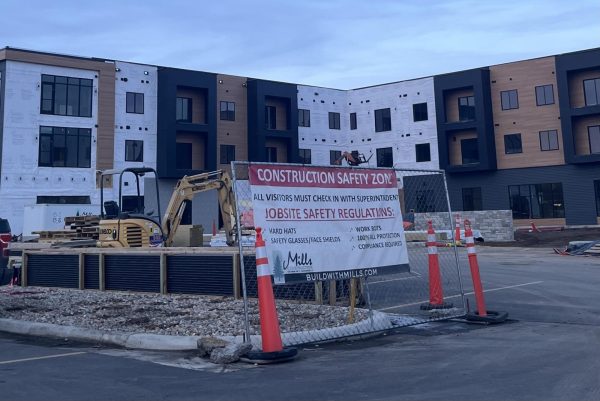Auto insurance basics
November 4, 2003
Char Telkamp
Most states require a minimum amount of automobile insurance coverage.
But if you’re interested in protecting yourself from a lawsuit or hefty repair bills, then it makes sense to buy more than what’s required.
Liability insurance
Liability coverage limits (that’s for the damage you do to others) are usually presented as a series of three numbers. For example, your agent might say that your policy carries liability limits of 20/40/10. That stands for $20,000 in bodily injury coverage per person, $40,000 in bodily injury coverage per accident, and $10,000 in property-damage coverage per accident.
Liability coverage is the foundation of any auto insurance policy and is required in most states. If you are at fault in an accident, your liability insurance will pay for the bodily injury and property-damage expenses caused to others in the accident, including your legal bills.
The other party may decide to sue you to collect “pain and suffering” damages. Bodily-injury coverage pays for medical bills and lost wages. Property-damage coverage pays for the repair or replacement of things you wrecked other than your own car.
Forty-five states require the purchase auto liability insurance, New Hampshire, South Carolina, Tennessee, Virginia and Wisconsin don’t mandate liability coverage, so your insurance minimum will depend on where you live.
For example, in Texas, drivers have to purchase at least $20,000 worth of bodily injury coverage per person, $40,000 worth of bodily injury coverage per accident, and $15,000 worth of property damage coverage.
Remember, if you cause a serious accident, minimum insurance may not cover you adequately. That’s why it’s a good idea to buy more than what your state requires.
If you own a home and have nest-egg and a savings account you should consider more liability insurance because, in most states, drivers are allowed to sue other drivers who injure them in car accidents. If you’re sued and your liability insurance doesn’t pay for all of the damages, your personal finances are on the hook, and it’s likely you’ll become a target.
Collision and comprehensive coverages
If you cause an accident, collision coverage will pay to repair your vehicle. You usually can’t collect any more than the actual cash value of your car, which is not the same as the car’s replacement cost.
Collision coverage is normally the most expensive component of auto insurance. By choosing a higher deductible, say $500 or $1,000, you can keep your premium costs down. However, keep in mind that you must pay the amount of your deductible before the insurance company kicks in any money after an accident.
Replacement cost vs. actual cash value
Replacement cost is the amount it would take to replace your vehicle or repair damages with materials of similar kind and quality, without depreciating. Depreciation is the decrease in vehicle value because of age or wear and tear.
Actual cash value (ACV) is the value of your property when it is damaged or destroyed. Claims adjusters usually figure ACV by taking the replacement cost and subtracting depreciation.
Insurance companies often will “total” your car if the repair costs exceed a certain percentage of the car’s worth. The critical damage point varies from company to company, from 55 percent to 90 percent.
Comprehensive coverage will pay for damages to your car that weren’t caused by an auto accident: Damages from theft, fire, vandalism, natural disasters or hitting a deer all qualify. Comprehensive coverage also comes with a deductible and your insurer will only pay as much as the car was worth when it got wrecked.
Because insurance companies normally will not pay you more than your car’s book value, it’s helpful if you have a rough idea of this amount. Check the Kelley Blue Book or the National Automobile Dealers Association. If your car is worth less than what you’re paying for the coverage, you’re better off not having it.
Medical payments, PIP, and no-fault coverages
MedPay will pay for your (and your passengers’) medical expenses after an accident. These expenses can arise from accidents while you’re driving your car, someone else’s car (with their permission), and injuries you or your family members incur when you’re pedestrians. The coverage will pay regardless of who is at fault, but if someone else is liable, your insurer may seek to recoup the expenses from him or her.
Personal injury protection (PIP) and broader “no-fault” coverages are expanded forms of medical payments protection that may be required in your state. Some states have optional PIP or no-fault coverage. Expanded features include payments for lost wages and childcare.
If you have a good health insurance plan, there might be little need to buy more than the minimum required PIP or MedPay coverages, if at all. And, if you already have disability insurance, there’s little reason to purchase higher-than-minimum amounts of PIP.
Uninsured/Underinsured motorists coverages
Uninsured motorists (UM) coverage pays for your injuries if a hit-and-run driver or someone who doesn’t have auto insurance strikes you. You’ll probably want to have at least the minimal amount of UM/UIM, it is required in many states.
Underinsured motorists (UIM) coverage will pay out if the driver who hit you causes more damage than his or her liability coverage can cover. In some states, UM or UIM coverage will also pay for property damages.
Add-on features
Several supplemental auto coverages are available, either as separate premium items or included in augmented policies.
Rental reimbursement, a common add-on, covers vehicle rentals required because your car is damaged or stolen.
Coverage for towing and labor charges in case of a road breakdown is also common.
Gap coverage for your new car will pay the difference between the actual cash value you receive for the car and the amount left on your car loan if your vehicle is totaled in an accident.
Tips for lowering your premiums
You can find discounts for your policy if you know where to look. Be sure to ask about specific discounts when you apply for or renew your policy. Auto insurers offer numerous ways to reduce your premiums, but don’t expect them to be handed to you. Make a list of possible discounts before you visit your agent or contact your company. Each company has some offerings that are specific, but there are quite a few that are general in the insurance industry.
Insuring more than one car with an insurance company will get you a discount, as well as insuring your home with the same insurance company as your car. And these days, auto insurers offer discounts to nonsmokers.
But did you know that in some states you can get a discount just for buying a brand-new car? If your car has never been titled, you could get as much as a five percent discount on your policy.
You can also get discounts if you are over age 55 and have voluntarily taken a defensive-driving course and/or are not employed full-time.
If you own your car outright or if your finance company allows it, you can lower your premiums by 15 to 30 percent by raising your deductible on collision from $200 to $500.
You can reduce your premiums by as much as 40 percent by increasing your deductible to $1,000.
For those of you whose rates went up when you listed a teen on your policy, there is some heartening news.
If your licensed child is under 21 and goes to college more than 100 miles from home you can save a few pennies because it’s assumed they won’t be driving your car year-round.
You can also get “safe car” discounts of up to five percent in some cases for having air bags or factory-installed mechanical seat belts, antilock brakes, and antitheft devices such as alarms.
And finally, if your profession is farming or ranching and you use your car for work, you can get as much as five percent taken off your auto insurance bill.
Always make sure you ask your agent about discounts on anything that makes your car safer or makes you a better driver.





















